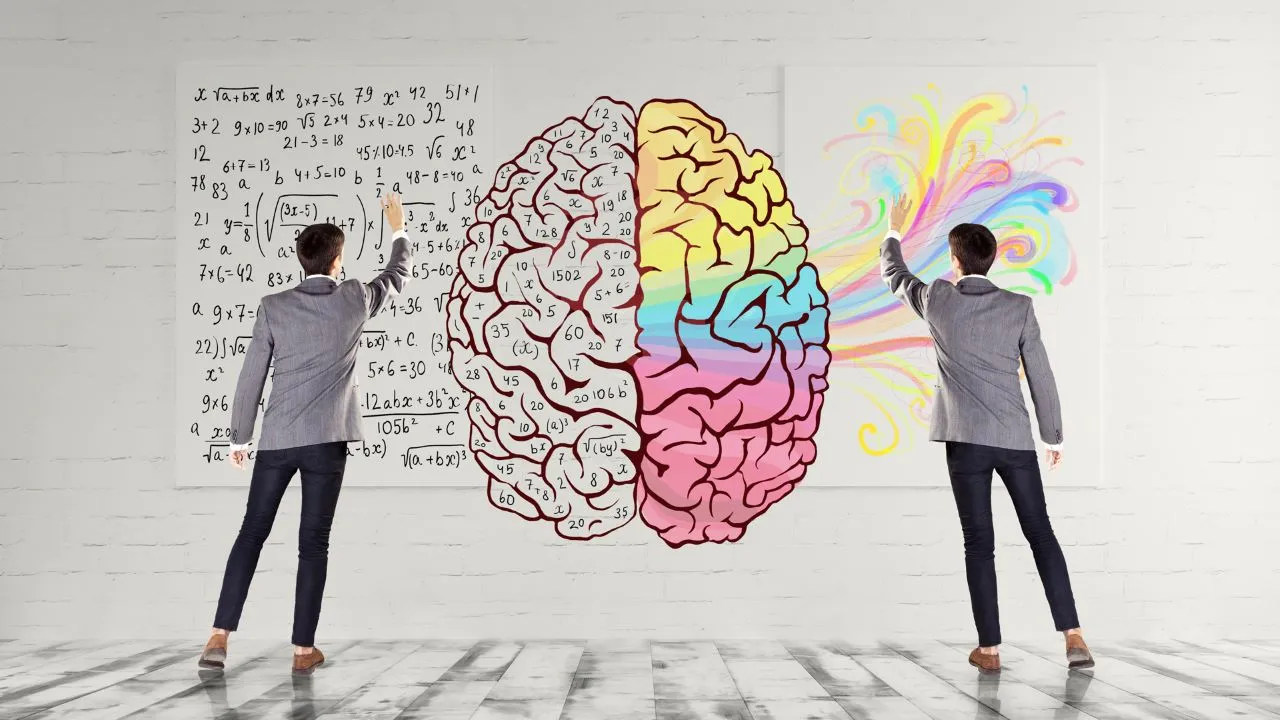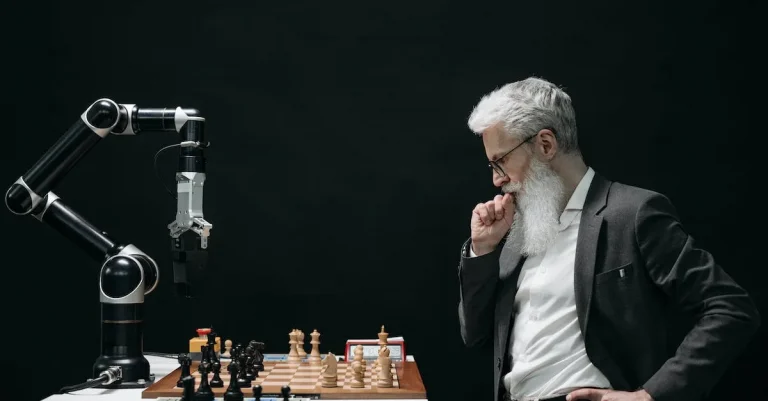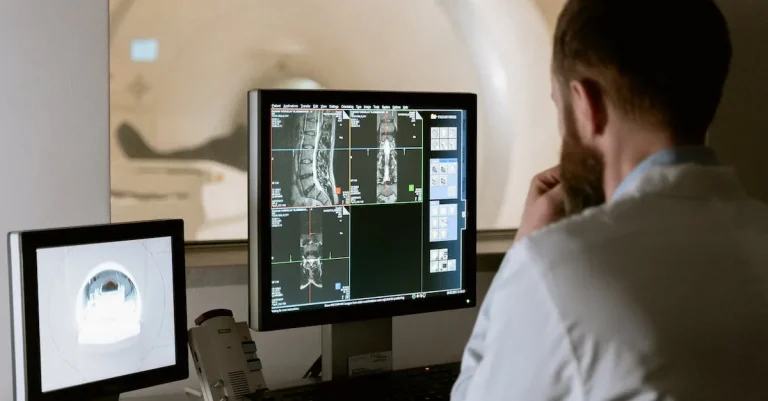Art Vs Science: An In-Depth Comparison
Art and science – two distinctly different fields that employ opposite approaches, right? While art relies on subjective inspiration and emotion, science utilizes objective logic and reason. But it’s not quite so black and white.
If you’re short on time, here’s a quick answer to your question: Art and science differ primarily in their methodology and goals. Science follows the scientific method to make testable claims about the natural world. Art allows free expression of ideas and emotion through creative mediums.
However, the two disciplines often complement and inspire each other.
In this comprehensive guide, we will compare and contrast art and science across various dimensions – methodologies, aims, thought processes, values, language and more. You’ll gain new insight into the similarities as well as differences between these multifaceted fields.
Let’s dive in to unravel the complex relationship between art and science.
Methodology and Validation
When comparing art and science, it is important to understand the different methodologies and validation processes that are involved in each field.
Methodology
In art, the methodology often involves a more subjective and creative approach. Artists rely on their imagination, intuition, and personal experiences to create their work. They may experiment with different techniques, materials, and styles to express their ideas.
The process of creating art is often seen as a form of self-expression and exploration.
On the other hand, science follows a more systematic and objective methodology. Scientists use the scientific method, which involves making observations, forming hypotheses, conducting experiments, and analyzing data.
The goal of science is to uncover knowledge and understanding about the natural world through empirical evidence and logical reasoning.
Validation
In art, validation is often subjective and based on individual opinions and interpretations. The value and significance of a piece of art may vary from person to person. Critics, curators, and art enthusiasts play a role in validating and recognizing the artistic merit of a work.
However, there is no standardized or universally accepted validation process in the art world.
On the other hand, science relies on peer review and replication to validate its findings. Scientific research is subjected to rigorous scrutiny by experts in the field before it can be accepted as valid. The process of peer review ensures that scientific studies are credible and reliable.
Additionally, scientific findings need to be reproducible by other researchers in order to be considered valid.
It is important to note that while art and science have different methodologies and validation processes, they are not mutually exclusive. In fact, there are areas where art and science intersect, such as in scientific illustration, data visualization, and even in the creative thinking process involved in scientific research.
For more information on the scientific method, you can visit Scientific American.
Goals and Objectives
When it comes to the fields of art and science, it is important to understand that they have distinct goals and objectives. While both aim to expand knowledge and understanding, they do so in different ways and with different purposes in mind.
Art Goals and Objectives
Art, in its various forms, is primarily focused on self-expression, creativity, and aesthetic appreciation. Artists strive to evoke emotions, challenge perceptions, and make a statement through their work. The goals of art often include:
- Creating something visually appealing or thought-provoking
- Conveying a message or story
- Eliciting emotions or sparking introspection
- Exploring new ideas and pushing boundaries
Artists may not always have a clear-cut objective in mind, as the process of creation can be an organic and intuitive one. The beauty of art lies in its subjective nature, allowing for multiple interpretations and personal connections.
Science Goals and Objectives
Science, on the other hand, is driven by a quest for knowledge, understanding, and practical applications. Scientists employ systematic methods and rigorous testing to investigate the natural world and uncover facts. The goals of science often include:
- Exploring and explaining natural phenomena
- Developing theories and models to explain observations
- Testing hypotheses and conducting experiments
- Improving technologies and finding practical solutions
Unlike art, science strives to be objective and reproducible, relying on evidence and logical reasoning. The scientific method ensures that theories and conclusions are based on data and can be independently verified.
It is important to note that while art and science have different goals and objectives, they are not mutually exclusive. In fact, there are instances where art and science intersect and complement each other.
For example, scientific illustrations and medical animations use artistic techniques to communicate complex scientific concepts in a visually engaging manner.
Understanding the goals and objectives of art and science helps us appreciate the unique contributions each field makes to society. Both have the power to inspire, inform, and enrich our lives in their own ways.
Thought Processes
When comparing art and science, one of the key differences lies in their thought processes. Art is often driven by creativity, imagination, and emotions. Artists use their intuition and subjective experiences to create unique and expressive works.
They may draw inspiration from their surroundings, personal experiences, or societal issues. It’s a fluid process that allows for individual interpretation and expression.
In contrast, science is a systematic and objective approach to understanding the natural world. Scientists rely on observation, experimentation, and analysis to uncover facts and principles. They follow a structured methodology, adhere to rigorous protocols, and base their findings on evidence.
The scientific thought process aims to eliminate bias and subjectivity, focusing on logical reasoning and reproducibility.
Artistic Thought Process
Artists often start with a concept or idea and then explore different ways to bring it to life. They may experiment with various materials, techniques, and styles to achieve their desired outcome. The artistic thought process is nonlinear and intuitive, allowing for spontaneity and creative expression.
Artists may draw inspiration from their emotions, personal experiences, or the world around them, using their imagination to transform their ideas into visual, auditory, or tactile forms.
Artistic thought processes are subjective and open to interpretation. Artists encourage viewers to engage with their work and form their own opinions and meanings. The subjective nature of art allows for a wide range of perspectives and individual experiences, making it a deeply personal and emotional form of expression.
Scientific Thought Process
Scientists, on the other hand, follow a more structured and systematic thought process. They begin with a research question or hypothesis and then design experiments or studies to test their ideas. The scientific thought process involves careful observation, data collection, and analysis.
Scientists strive for objectivity and aim to eliminate biases or personal opinions from their research.
Scientific thought processes rely on evidence and reproducibility. Results are published in peer-reviewed journals, allowing other scientists to verify and build upon previous findings. Scientific knowledge is cumulative, with new discoveries and theories constantly shaping our understanding of the world.
It’s worth noting that while art and science have different thought processes, they are not mutually exclusive. In fact, they often intersect and influence each other. Artists may draw inspiration from scientific discoveries, and scientists may use art as a means of communicating their research findings to the general public.
For more information on the thought processes in art and science, you can visit Smithsonian Magazine and Nature.
Values and Culture
When it comes to the values and culture surrounding art and science, there are distinct differences that shape the way these disciplines are perceived and approached.
Art:
Art is often seen as a form of self-expression and creativity. It allows individuals to explore their emotions, thoughts, and ideas through various mediums such as painting, sculpture, and music. The value placed on art lies in its ability to evoke emotions, challenge societal norms, and spark conversations.
Artists often prioritize individuality and freedom of expression, valuing the uniqueness and subjective interpretation of their work.
Artistic culture tends to embrace diversity and encourages individuals to think outside the box. It celebrates innovation and encourages artists to push boundaries and experiment with new techniques and styles.
Artistic communities are often known for their open-mindedness, welcoming different perspectives and fostering collaboration.
Science:
Science, on the other hand, is driven by the pursuit of knowledge and understanding. It aims to explain the natural world through observation, experimentation, and analysis. The value placed on science lies in its ability to provide evidence-based explanations and solutions to various problems.
Scientists prioritize objectivity, accuracy, and reproducibility, valuing the rigorous process of scientific inquiry.
Scientific culture emphasizes critical thinking and the importance of evidence. It values skepticism and encourages scientists to question existing theories and hypotheses. Scientific communities are known for their dedication to accuracy and precision, often relying on peer review and collaboration to ensure the validity of their findings.
Comparison:
While art and science have different values and cultures, they are not mutually exclusive. In fact, they often intersect and complement each other. Many artists draw inspiration from scientific discoveries and use scientific methods to inform their creative processes.
Similarly, scientists appreciate the beauty and aesthetic aspects of nature, often finding inspiration in art.
Both art and science contribute to our understanding of the world and have the power to inspire and provoke thought. They play a crucial role in shaping our society and culture, offering different perspectives and ways of interpreting the world around us.
Ultimately, the values and culture surrounding art and science reflect the diversity of human expression and curiosity. Embracing both disciplines can lead to a richer and more holistic understanding of the world we live in.
Language and Communication
Language and communication play a vital role in both art and science. However, the way they are utilized and the purposes they serve differ in these two disciplines.
Artistic Expression
In the realm of art, language is often used as a tool for self-expression and storytelling. Artists use words, whether in the form of poetry, lyrics, or written narratives, to convey emotions, ideas, and messages in a unique and creative way.
Language in art can be seen as a companion to visual elements, enhancing and providing deeper meaning to the artwork.
For example, renowned artist Pablo Picasso once said, “Art is the lie that enables us to realize the truth.” Through his use of language, Picasso was able to convey his philosophy and perspective on art, adding another layer of depth to his already powerful paintings.
Scientific Communication
In contrast, language in science serves a more technical and precise purpose. Scientists use language to communicate their research findings, experiments, and theories to their peers and the broader scientific community.
The language used in scientific journals and papers is often highly specialized, with specific terms and concepts that are understood by fellow scientists in the same field.
Scientific communication aims to be objective, clear, and concise, focusing on facts, evidence, and logical reasoning. It is essential for scientists to use language effectively to ensure their research is accurately understood and can be replicated or built upon by others in the scientific community.
The Intersection of Art and Science
Despite their differences, art and science often intersect when it comes to language and communication. In recent years, there has been a growing interest in the field of science communication, which seeks to bridge the gap between scientists and the general public.
Artistic methods, such as visualizations, animations, and storytelling, are being used to make complex scientific concepts more accessible and engaging to a wider audience. This approach helps break down barriers and fosters a better understanding and appreciation of scientific advancements.
For instance, websites like National Geographic and NASA utilize stunning visuals and captivating language to communicate scientific discoveries and inspire awe and curiosity in people of all ages.
While language and communication serve different purposes in art and science, they both play integral roles in expressing ideas, sharing knowledge, and connecting with others. Whether it is through the emotive power of words in art or the precision of scientific terminology, language continues to be a powerful tool in human expression and understanding.
Conclusion
In summary, art and science offer complementary ways to understand ourselves and the world around us. Though differing in approach, they often inspire and build on each other. While science seeks factual explanations of natural phenomena, art provides an outlet for creative expression of emotions and the human experience.
By comparing key aspects like methodology, thought processes, values and communication styles, we gain appreciation for what sets these two fields apart as well as what brings them together. Neither is superior – both art and science give meaning to life in their own indispensable way.
So next time you witness the elegance of a scientific theory or find yourself moved by the passion of a striking artwork, remember – these two domains are more alike than we think.







